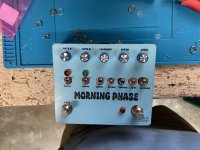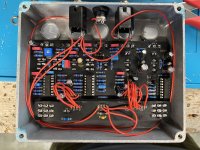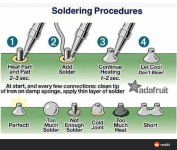Be carefull with the toggleswitches when you will reflow them. They are really heat sensitive, the metal legs can get too hot and melt the plastic, it won't work correctly. Don't stay more than 2 or 3 seconds on the pads with your iron, and don't stay too long on the same toggleswitch.
View attachment 58705
If you reflow some pads on the soldering side, remember to take every heat-sensitive devices off the board : ICs, transistors. You didn't use sockets for your transistors, so be carefull around them, be quick and cautious.
Edit : You can post a picture of the soldering side if you are stuck, and voltage readings.
Check all suspicious pads with a multimeter in continuity mode, to see if there are some bridges, creating short circuits. If it rings, there is contact. Check the schematics in the instruction files to see if two components are supposed to be connected.
Clean the tiny spaces between pads, going quickly with the tip of the soldering iron, without overheating the pcb.
In continuity mode, you can also check if two components are connected as they should be, according to schematics.
Soon or later, on this build or the next big one, you'll need an audio-probe to follow the signal and see where it stops, to locate precisely where is the issue. There are lots of instructables online to build one, it's easy.
[DIY Fever] Audio Probe - very simple contraption that helps with debugging audio circuits
diy-fever.com
It's a good phaser with interesting mods, you won't be disappointed. Settings with Vibrato + low pass + 2 stages give some beautiful sounds.






